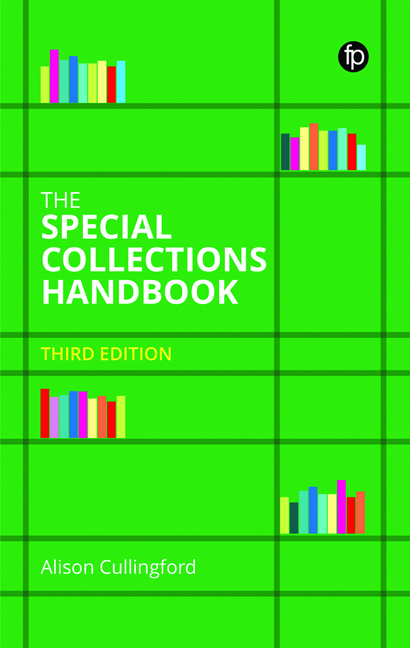Book contents
10 - Widening Access to Special Collections
Published online by Cambridge University Press: 28 April 2022
Summary
Introduction
This chapter covers strategic attempts to widen Special Collections access beyond ‘traditional’ user groups and services. Such activities are becoming ever more significant in Special Collections work, as libraries recognise the value of collections in making their organisation distinctive and helping with lifelong learning. This chapter builds on ideas and techniques mentioned in Chapters 8 and 9 and discussions around ethics in Chapter 7. It covers:
1 What do we mean by new audiences?
2 Why libraries might wish to reach new audiences.
3 Issues and obstacles to widening access.
4 Overcoming the challenges.
5 Audience segmentation.
6 Programming for new audiences.
7 Assessment and feedback.
8 Suggestions for further reading and useful websites.
A note on terminology
Widening access is often known as outreach. Other terms associated with widening access are audience development (understanding current audiences and developing offers for new ones) and community engagement, in which universities and other organisations try to work more closely with local people.
What do we mean by new audiences?
New audiences can be anyone not currently using the service, but in the context of outreach we are usually discussing demographics.
The exact make-up of ‘traditional’ audiences varies between sectors and countries, but they are more likely to be white, educated and older, not necessarily wealthy, but having significant social and cultural capital. This means that these audiences are confident using services such as libraries. People interested in family history are a traditional audience for many archives.
Academics and researchers form a significant traditional audience for Special Collections, especially in universities and other research libraries. However, many active scholars are affected by the barriers to access discussed below. Undergraduate students are another audience possibly excluded in the past but increasingly welcomed now (see Chapter 11).
Outreach initiatives typically focus on attracting more:
• communities living nearby
• younger people
• more diverse groups
• families
• children/schools
• disadvantaged people
• migrant communities
• refugee communities
• older people who are not traditional users and who may be digitally excluded.
Why reach out?
Special Collections often lack the time and resources to meet the demand from current users, not to mention all the other challenges discussed in this book. The activities in this chapter are, as all commentators observe, labour-intensive.
- Type
- Chapter
- Information
- The Special Collections Handbook , pp. 249 - 264Publisher: FacetPrint publication year: 2022



